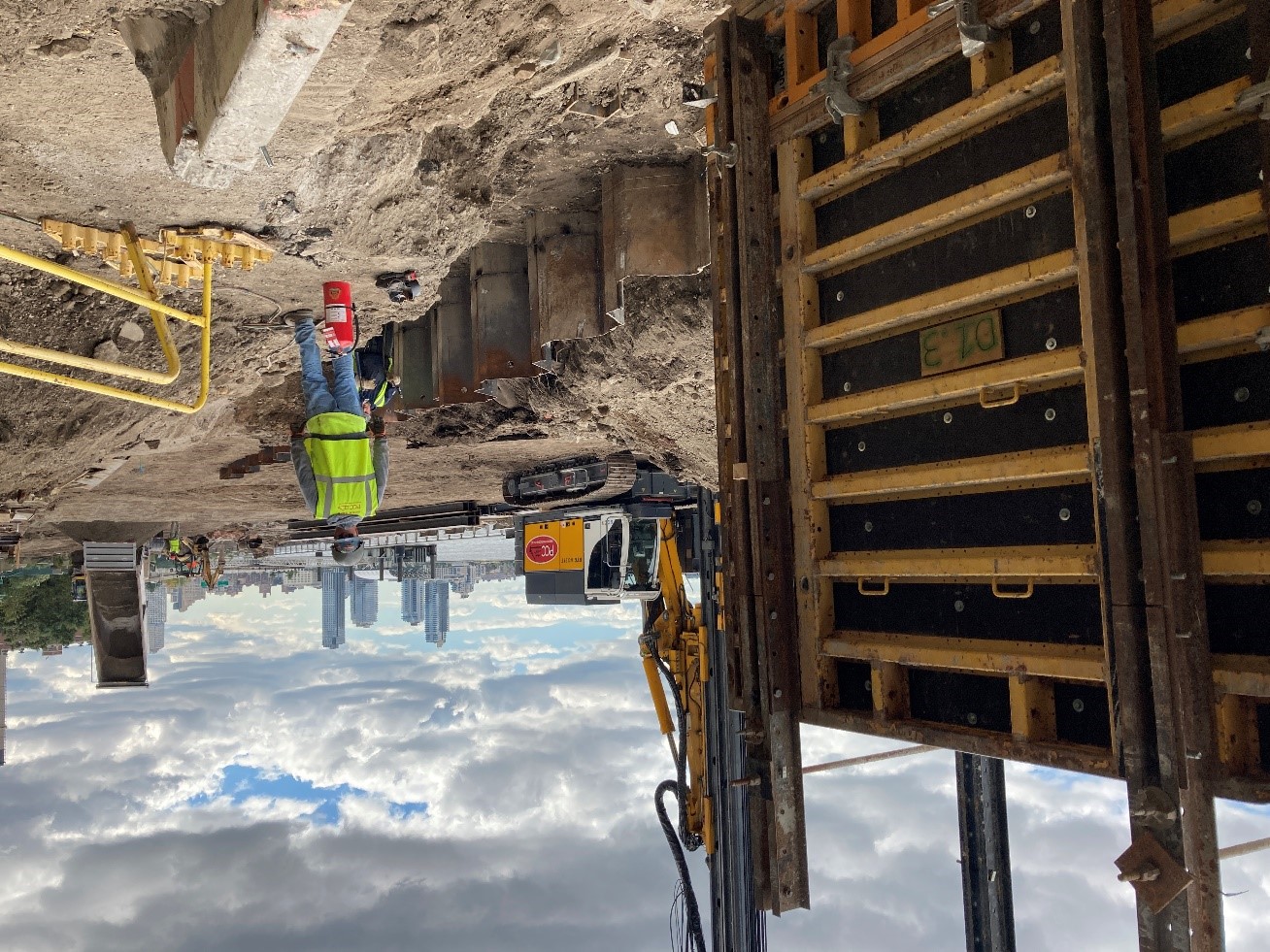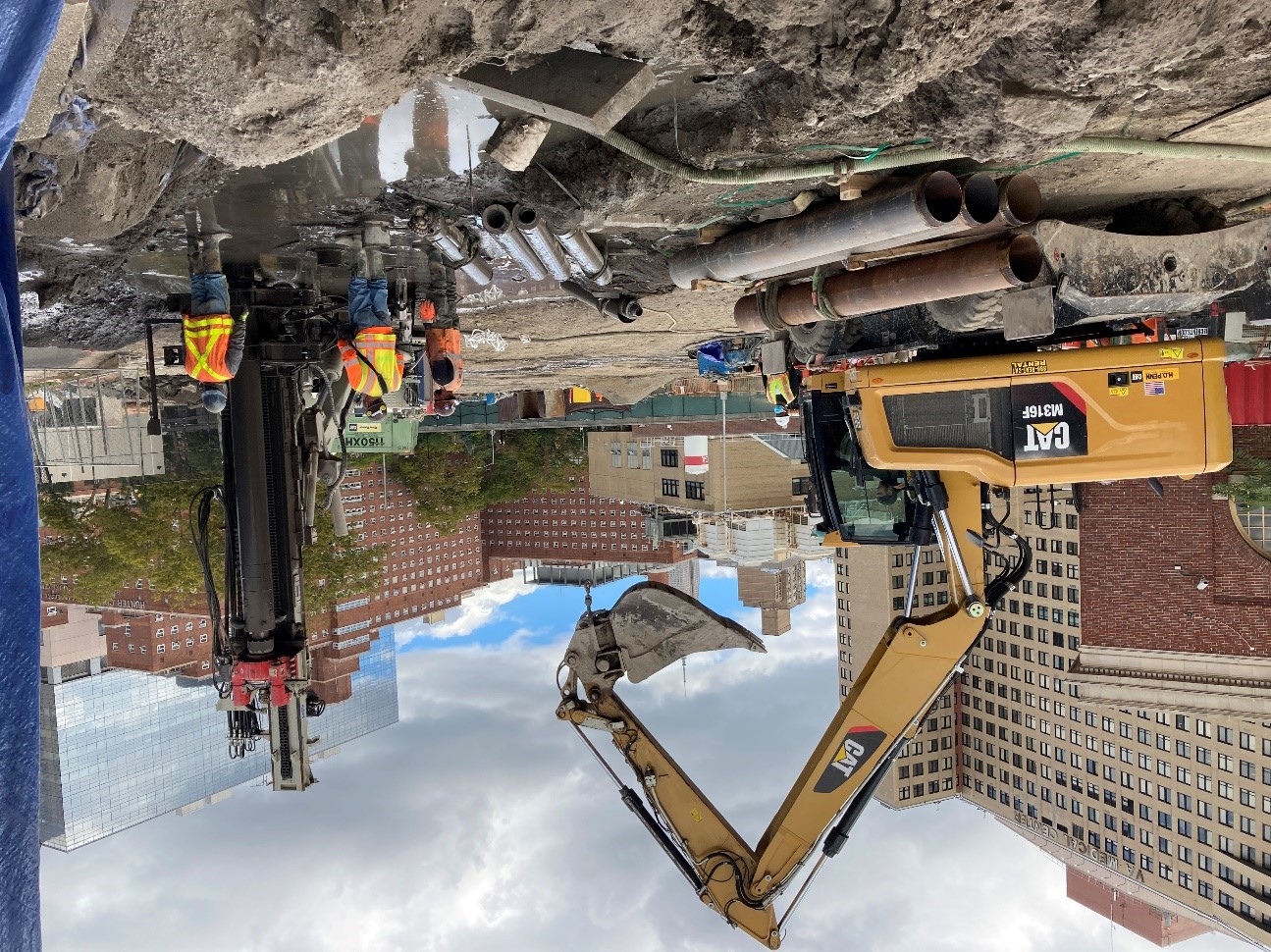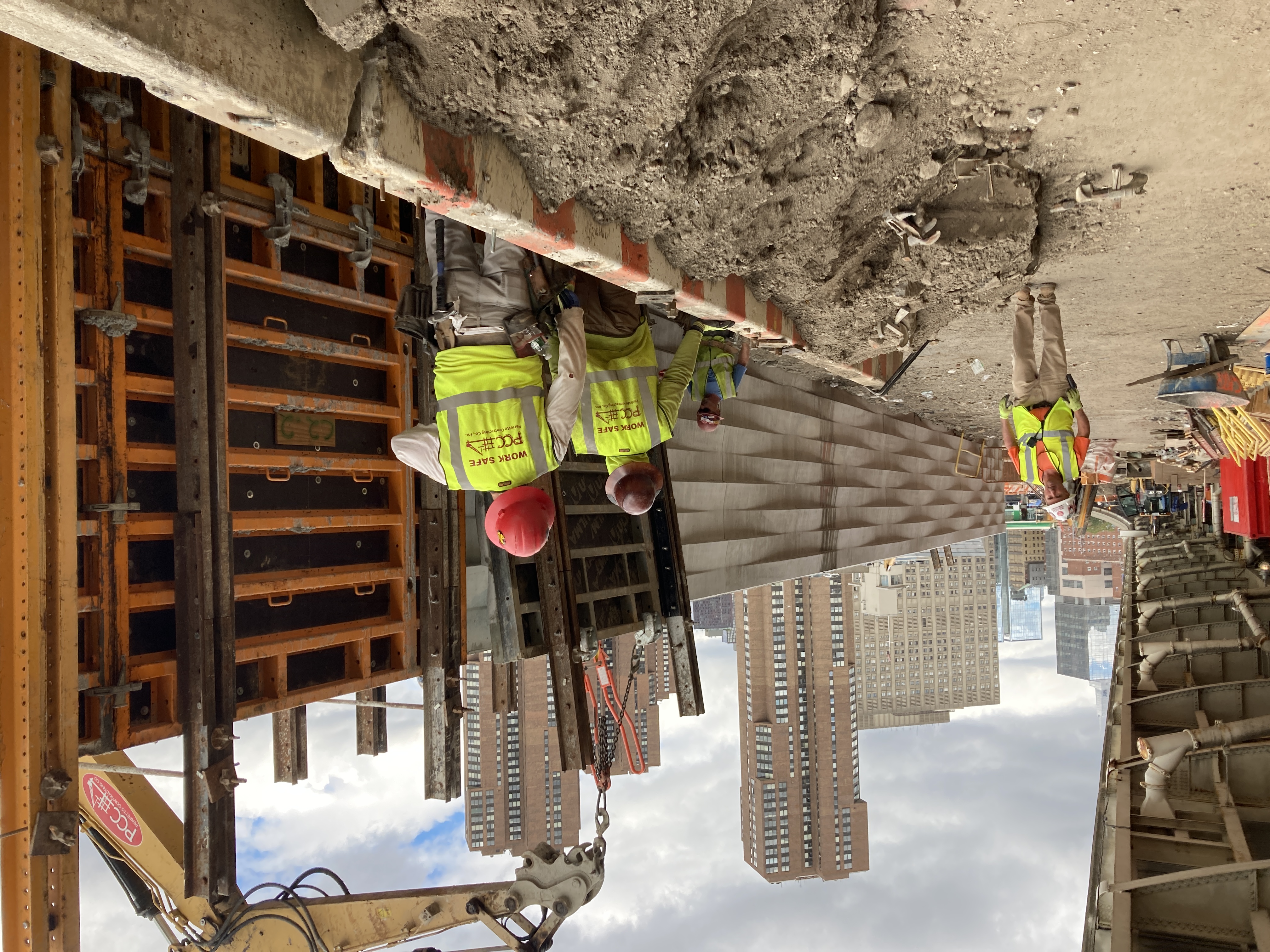
 Department of Design and Construction311
Department of Design and Construction311 Search all NYC.gov websites
Search all NYC.gov websites
New Sections of Floodwall Completed as East Side Coastal Resiliency Progresses
DDC: Ian Michaels, 646-939-6514, michaelia@ddc.nyc.gov
(New York, NY – October 6, 2021) The NYC Department of Design and Construction (DDC) announced today additional construction progress in East Side Coastal Resiliency (ESCR), the City’s largest and most complex coastal resiliency project to-date, with approximately 500 feet of new floodwall now completed in the area north of Stuyvesant Cove Park along the East River.
“ESCR continues to make progress and every day brings us closer to providing flood protection to more than 100,000 New Yorkers,” said DDC Commissioner Jamie Torres-Springer. “It’s great to see tangible, visible evidence that we can implement a massive, life-saving coastal protection program that will also increase recreation and access to the waterfront.”
"The work at Asser Levy Playground and Stuyvesant Cove Park represents a crucial step in providing resilient park improvements and integrated flood protection for the surrounding community. We continue transforming underused spaces into recreational assets, including three new turf fields in Midtown, for the neighborhood to enjoy while ESCR construction progresses," said NYC Parks Commissioner Gabrielle Fialkoff.
“As this critical project moves forward, construction crews are quite literally building a safer, more resilient future for New York City,” said Jainey Bavishi, Director of the Mayor’s Office of Climate Resiliency. “Hurricane Sandy devastated the east side of Manhattan. ESCR will provide much-needed protection to this vibrant and diverse community, which includes over 28,000 NYCHA residents.”

Heavy construction for ESCR is currently taking place in Asser Levy Playground and in the northern end of Stuyvesant Cove Park, where a new floodwall is rising as workers drive two different kinds of piles 100 feet or more into the ground. Sheet piles are installed first to form an underground barrier against water infiltration from the East River; standard H-piles in the form of large steel beams are then installed behind the sheeting to form the anchor of the new floodwall.
The reinforced concrete walls are being cast in place on top of the H-piles using concrete forms, which create a decorative wave pattern in the exposed concrete when removed. Before work could begin on the wall, crews relocated underground utilities such as gas and electrical lines to make it possible to work beneath the surface. Sewers, which must have continuous access to the River to discharge stormwater during heavy rain events, are threaded through openings created for them in the subsurface sheet piles.
Following construction, the 1.9-acre waterfront Stuyvesant Cove Park will be rebuilt with a combination of floodwalls and floodgates along its western edge. The park's planting beds will be raised where possible to keep tree roots out of the range of future sea level rise. New irrigation systems will be installed and the waterfront esplanade will receive enlarged paving and planting areas as well as new furnishings and energy-efficient LED lights.
The 2.44-acre Asser Levy Playground will also see improvements, and will be rebuilt with extensive landscaping and new playground and basketball areas using resilient materials.

ESCR will also reconstruct the Manhattan Greenway that runs along the western edges of East River Park and Stuyvesant Cove Park. Within Stuyvesant Cove Park, the Greenway will include an asphalt bike path that runs parallel to the flood protection and separates cyclists from pedestrians at the waterfront. Foundations will also be built for a future flyover bridge that will elevate the Greenway over its narrowest point as it passes a Con Edison facility at 14th Street.
East Side Coastal Resiliency will extend flood protection and improve open spaces for more than 110,000 New Yorkers – including 28,000 public housing residents – on Manhattan’s East Side, from East 25th Street south to Montgomery Street.
The project will create an integrated 2.4-mile system of raised parkland, floodwalls, berms and movable floodgates to create a continuous line of protection against sea level rise and the growing threat of stronger, more severe coastal storms worsened by climate change. The project has been designed to improve waterfront access through reconstructed bridges and entry points and will also upgrade existing sewer systems to capture and manage precipitation during storms.
The level of flood protection provided by ESCR is equal to the region’s “worst-case” anticipated 100-year storm in 2050, based on future climate change projections produced by the New York City Panel on Climate Change (NPCC), an independent body composed of climate scientists that advises City policymakers on local resiliency and adaptation strategies. The project uses an adaptive design that can accommodate the addition of two more feet of elevation throughout the project area should sea levels in the coming decades rise faster than current projections anticipate.
Construction of ESCR began in November 2020, with major construction beginning in April 2021. In June, Mayor de Blasio announced almost $140 million of additional funding to add more community amenities as part of ESCR, including new public restrooms, improvements to a park amphitheater and, in a separate capital project, $129 million for the new flyover bridge for the Manhattan Greenway.
ESCR construction in East River Park is expected to begin later this month using a phased construction schedule to ensure that roughly half of that park will remain open throughout the duration of the project. Phased construction schedules are also being employed elsewhere to maximize public access to open space and recreational amenities throughout the entire project's footprint.
NYC Parks recently announced the completion of three new turf fields in the communities surrounding ESCR as part of the City’s response to the community’s need for supplemental recreational resources during ESCR construction. Numerous other neighborhood improvements have already been completed by NYC Parks or are underway, including neighborhood greening that has planted more than 500 new trees on neighborhood streets and in neighborhood parks.
The City is sponsoring a “Call for Student and Community Art” for students and local artists to submit artwork for display on banners on the fencing surrounding ESCR construction. Students whose works are selected for display will receive a $300 award while local artists will receive $1,000. All students who submitted artwork will receive a Certificate of Participation.
The $1.45 billion project is projected to be completed in 2025.
About the NYC Department of Design and Construction
The Department of Design and Construction is the City’s primary capital construction project manager. In supporting Mayor de Blasio’s long-term vision of growth, sustainability, resiliency, equity and healthy living, DDC provides communities with new or renovated public buildings such as firehouses, libraries, police precincts, and new or upgraded roads, sewers and water mains in all five boroughs. To manage this $15.5 billion portfolio, DDC partners with other City agencies, architects and consultants, whose experience bring efficient, innovative and environmentally-conscious design and construction strategies to City projects. For more information, please visit nyc.gov/ddc.



